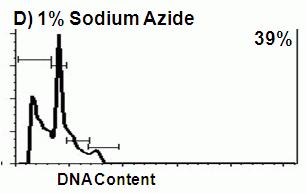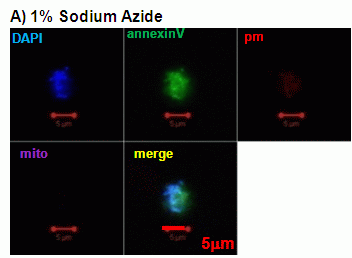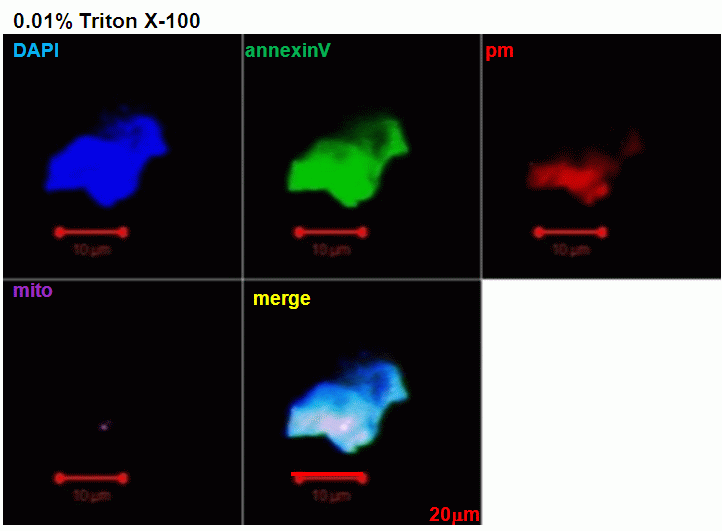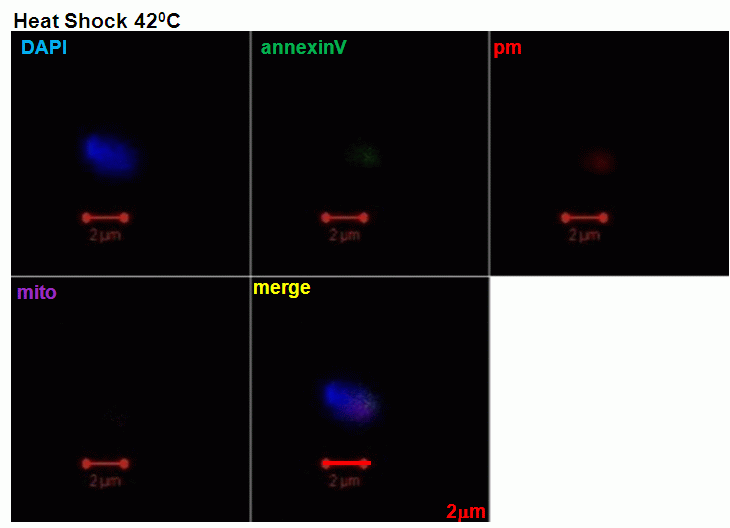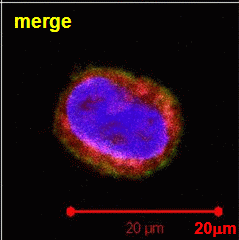There are certain characteristics of oncotic cells that can be identified and used to detect oncotic cells in an otherwise healthy population of cells. The method employed to induce oncosis, either a) chemical; b) detergent; c) heat shock or d) drug generates a variable degree of DNA breakdown. The loss of DNA from permeabilised cells is due to DNA fragmentation. When cells are permeabilised, for example by 70% ethanol. The result is a population of cells with a reduced DNA content. If the cells are then stained with a DNA intercalating dye like propidium iodide, then a DNA profile representing cells in G1, S-phase and G2M will be observed with apoptotic cells being represented by a sub G0/G1 population seen to the left of the G0/G1 peak.
The advantage of this method is that it is very rapid and will detect cumulative oncosis and is applicable to all cell types. However in order to be seen in the SubG1 area, a cell must have lost enough DNA to appear there; so if cells enter apoptosis from the S or G2/M phase of the cell cycle or if there is an aneuploid population undergoing oncosis, they may not appear in the SubG1 peak. Also cells that have lost DNA for any other reason, e.g. death by apoptosis, will appear in the SubG1 region; so we have to be careful about how we define the sub-G1 peak. As with all methods that are used to detect oncosis, the more processing steps involved, the greater the likelihood of losing cells and as apoptotic and necrotic cells are sometimes preferentially lost, the fewer manipulations the better.
DNA fragmentation by oncosis can be induced by 1% sodium azide, 0.01% Triton X-100 or heat shock at 42C. Such cell can be loaded with carbocyanine dye DiIC1(5) at 40nM to detect lack of mitochondrial function; the plasma membrane of such cells can be loaded with Bis-oxonol at 100nM and labelled with annexin V-FITC and DAPI (200ng/ml). Labelled cells can then be imaged using confocal microscopy, see figure. in contrast cells heated treated at 56C show little fragmentation, see figure.

